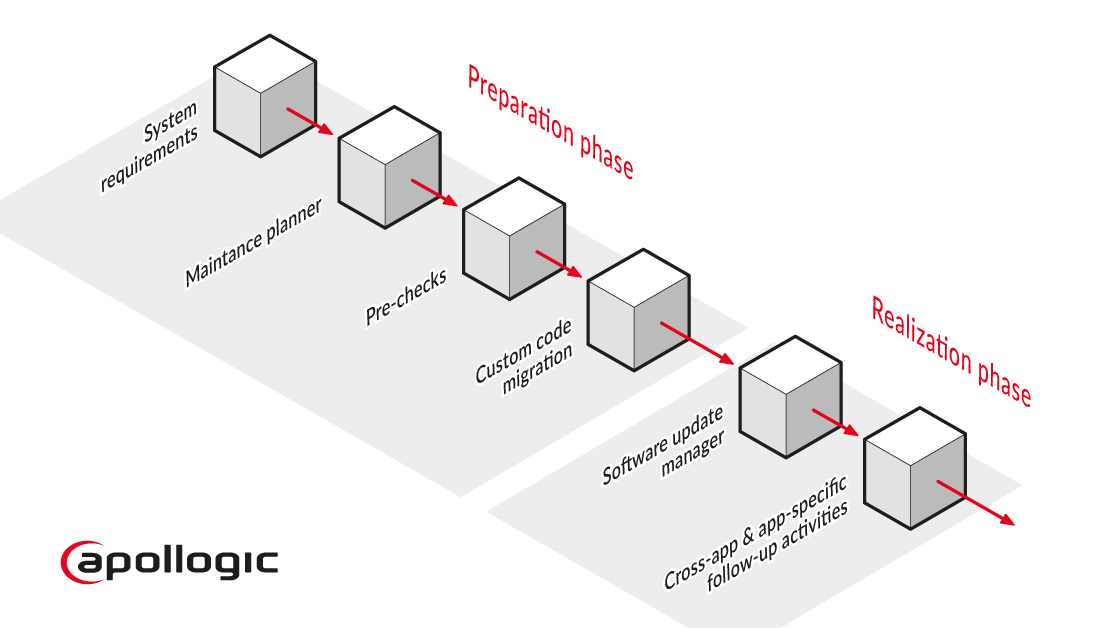Code adaptation during migration from SAP ERP to S/4HANA

Tomasz Ostrowski, Team Leader SAP Basis
- 13th February 2020
- Trends in SAP
- 3 min

Currently, many businessmen are planning to migrate from the classic ERP system to S/4HANA. In order to optimize the adaptation, it’s worth to apply best practices in carrying out the process, which basically consists of two main stages – the preparation phase and the implementation phase.
Why are we talking about conversion, not system updates?
The transition from SAP ERP to S/4HANA, although we operate on the same installation and the final result is the latest version, isn’t called by SAP a simple update, but a conversion. S/4HANA is a completely new business line, naturally replacing the SAP ERP product. It’s built on a completely new architecture. It’s characterized by a reduced data model and a rebuilt and refreshed user view. Therefore, the migration project from SAP ERP to S/4HANA cannot be carried out without proper code adaptation.
SAP is aware of the challenge faced by every customer undertaking the transformation of their business. In this process, we are supported by a list of tools and operations to be performed in the phase of preparing for the conversion.
How is the migration process going?
The preparatory phase leads to a successful migration project. It consists of the following steps:

System requirements – it’s the most important part of the process defining the need to replace physical equipment or determining the absence of such need. Make sure that your existing database is supported by S/4HANA and that it is in the correct version and standard. The same question should be answered by checking whether the SAP ERP system intended for conversion (dual stack is not supported).
Maintenance planner – in this phase, the automatic process checks the system for activated business functions, solutions used by the client and installed add-ons. If it detects incompatibility with S/4HANA system – conversion will not be possible.
Pre-checks – this phase consists of checking both technical and functional compatibility with the conversion process.
Custom code migration – the most important process in the initial conversion phase. More information about this stage of the process you’ll find below.
Methodology of transition to SAP S/4HANA – technical scenario
With the launch of S/4HANA, many functionalities of the ERP system were simplified. It should be noted that we are talking about technical simplification, not functional. Rebuilding some of the features have also reduced the need for stored data.
SAP is aware of individual business solutions used by customers. By using the tools provided by SAP and the skills of experienced consultants familiar with the ERP and S/4HANA systems, going through this process shouldn’t cause problems.
The first step to determine how much work lies ahead for the developer when migrating and adapting their code to changes in S/4HANA is to read the results of the report, which searches the code for the SAP standard in use and compares it with the changes made to S/4HANA. It isn’t only about single fields or variables, but also about getting rid of a large number of structures or data tables.
Each discrepancy detected by the SAP system is accompanied by a special note, informing about the number of changes that the developer has to make in his code.
One of the most characteristic modifications is, for example, a change in the length of the material number field from 18 to 40 characters. The change may seem trivial, but if we use 18 characters for a large part of our code, and we get it in 40 characters, we lose 55% of the data. Please note that this is one of the clearest examples of change.
SAP S/4HANA is a solution supporting enterprise management and using the potential of the SAP HANA database in real-time. It is worth making a decision to plan the migration process from SAP ERP to S/4HANA in order to seal the system and increase the security level of the target environment. In order to avoid a business disorder, the code adaptation project should be entrusted to experienced consultants who have the knowledge and competences necessary to perform the migration properly.
Do you want to migrate from SAP ERP to S/4HANA?
- On 13/02/2020







0 Comments